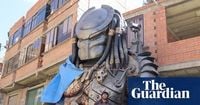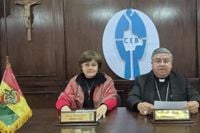Bolivia, a nation known for its breathtaking highlands and deep Amazonian forests, stands at a critical crossroads as it prepares for a presidential runoff election on October 19, 2025. After nearly two decades under the far-left Movement Toward Socialism, the country’s political landscape has shifted dramatically. The August 17 general election—marked by high voter turnout amid food shortages, inflation, and a climate of unrest—produced a surprising result: a runoff between centrist Rodrigo Paz Pereira of the Christian Democratic Party and right-wing former president Jorge "Tuto" Quiroga. For many, this moment signals hope for renewal. But for Indigenous and environmental leaders, the prospect of real change—especially for Bolivia's embattled Amazon region—remains painfully uncertain.
Approximately 8% of the Amazon rainforest lies within Bolivia’s borders, making it one of South America’s most ecologically significant and biodiverse countries. Yet, as reported by The Associated Press, Bolivia is also one of the fastest-deforesting nations in the Amazon basin. The stakes are enormous: the Amazon helps absorb carbon and regulate global climate patterns, but scientists warn that ongoing deforestation is pushing parts of the forest toward an irreversible tipping point, potentially transforming dense jungle into savanna.
Environmental crises in Bolivia are not mere abstractions. In 2019, wildfires fueled by loosened regulations and legalized agricultural clearing wiped out nearly a million hectares—about 3,860 square miles—of forest. The devastation has only intensified. In 2024, fires scorched more than 10 million hectares (roughly the size of Iceland), making Bolivia second only to Brazil in tropical primary forest loss that year, according to Global Forest Watch. The drivers? Cattle ranching, soy farming, logging, and mining—industries that have steadily encroached on Indigenous lands and natural habitats.
Despite the urgency, environmental issues have not dominated the campaign trail. Both candidates have outlined proposals, but skepticism runs deep. Rodrigo Paz has pledged a $15 billion "green government" funded by carbon credits—financial instruments generated by projects like reforestation that offset emissions. His plan includes tighter controls on agricultural burns and a crackdown on illegal gold mining, a major source of mercury contamination in Bolivian rivers. Quiroga, for his part, promises to tighten controls on forest fires, promote sustainable agriculture, expand biofuel production, encourage reforestation, and protect parks. He also advocates using carbon and green bonds to finance conservation projects.
Yet, critics warn that these promises may not be enough—or may even backfire. According to Stasiek Czaplicki, a Bolivian environmental economist, the danger lies not only in the direction of policy but in the state’s capacity to enforce it. He argues that Quiroga’s proposals, particularly those to end collective Indigenous land titles and expand soy and cattle production, could accelerate deforestation and undermine the very institutions tasked with environmental protection. "Quiroga would be worst for the institutions that defend the environment," Czaplicki told The Associated Press.
For Indigenous leaders like Ruth Alipaz Cuqui, coordinator of the alliance CONTIOCAP and a member of the Uchupiamona community, the cycle of broken promises is all too familiar. "Agreements are signed, commitments are made, laws and decrees are passed, but in the territory there is absolutely nothing applied," she said. The consequences, she argues, are devastating: "What happens to us is that we are stripped of our territory, poisoned with smoke and mercury, and also deprived of the means of life such as water, soil, and food. The life of Indigenous peoples in Bolivia has gone from bad to worse. We will continue defending. It’s not just our lives, it is our very existence that is at stake."
The Amazon’s environmental crises are starkly visible in places like Santa Cruz, a region that has already lost 68% of its water reserves and now receives 30% less rainfall than it did a decade ago. Mercury, widely used in gold mining, has contaminated fish—a dietary staple for Amazonian communities. "Our fish is really completely contaminated by mercury already and people are really suffering from high levels of mercury poisoning," said Vincent Vos, a Dutch-Bolivian researcher based in the Amazonian department of Beni. The gap between campaign rhetoric and on-the-ground reality, he adds, is measured in disappearing rivers, vanishing fish, and poisoned communities.
While the runoff candidates both promise to address the visible crises—wildfires, deforestation, and agricultural expansion—experts like Nick Fromherz, an adjunct professor at Lewis & Clark Law School specializing in Latin American environmental law, point out that less visible but equally severe threats like mercury contamination remain largely unaddressed. "Both candidates have spoken broadly about fighting wildfires and managing the agricultural frontier. But they've offered few solutions to less visible crises like mercury contamination from gold mining," Fromherz told The Associated Press.
Bolivia’s environmental trajectory has been shaped by decades of political choices. Evo Morales, the country’s first Indigenous president, rose to power championing Indigenous rights and environmental protection, often invoking Pachamama—the Indigenous concept of Mother Earth. Yet, his socialist governments expanded exports of soy, beef, gas, and minerals to fund social programs. His administration allied with agribusiness and ranching elites, loosened land-clearing restrictions, and promoted infrastructure projects that opened new frontiers in the Amazon. The result: a steady erosion of the forests he once vowed to protect.
Against this backdrop of environmental degradation, the August 17 general election brought a different kind of hope. The Bolivian Bishops’ Conference (CEB) issued a statement on August 18, celebrating what they described as a "demonstration of democratic commitment, hope, and responsibility on the part of the Bolivian people." The bishops welcomed the election results as "opening a new chapter in the country’s political history" and giving "a voice to all Bolivians who strive and yearn for significant change." They congratulated both Paz and Quiroga on reaching the runoff and urged citizens to "continue to responsibly inform themselves about each candidate’s proposals in this new electoral phase." In a call for unity, they added, "We invite all Bolivians to maintain unity, respect, and solidarity in these decisive moments. May God continue to accompany the history of our homeland, and may the Virgin Mary always intercede for better days for all."
As Bolivia heads toward its October 19 runoff, the world will be watching. The Amazon’s fate—and with it, the fate of countless Indigenous communities and ecosystems—hangs in the balance. For those living on the front lines, hope is tempered by hard-earned skepticism. But one thing is clear: the choices made in the coming months will reverberate far beyond Bolivia’s borders, shaping the future of one of the planet’s most vital landscapes.


